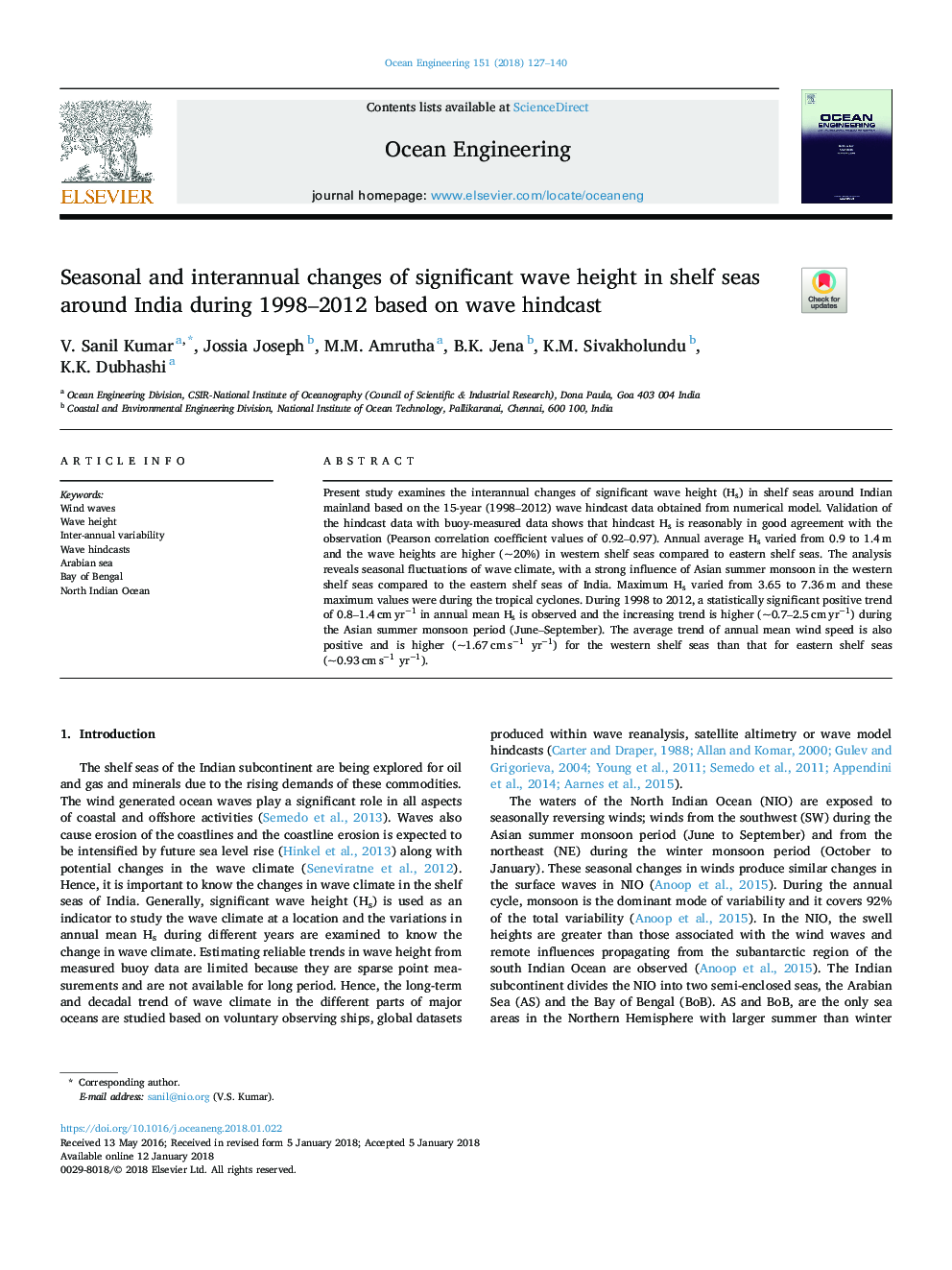| Article ID | Journal | Published Year | Pages | File Type |
|---|---|---|---|---|
| 8063268 | Ocean Engineering | 2018 | 14 Pages |
Abstract
Present study examines the interannual changes of significant wave height (Hs) in shelf seas around Indian mainland based on the 15-year (1998-2012) wave hindcast data obtained from numerical model. Validation of the hindcast data with buoy-measured data shows that hindcast Hs is reasonably in good agreement with the observation (Pearson correlation coefficient values of 0.92-0.97). Annual average Hs varied from 0.9 to 1.4â¯m and the wave heights are higher (â¼20%) in western shelf seas compared to eastern shelf seas. The analysis reveals seasonal fluctuations of wave climate, with a strong influence of Asian summer monsoon in the western shelf seas compared to the eastern shelf seas of India. Maximum Hs varied from 3.65 to 7.36â¯m and these maximum values were during the tropical cyclones. During 1998 to 2012, a statistically significant positive trend of 0.8-1.4â¯cmâ¯yrâ1 in annual mean Hs is observed and the increasing trend is higher (â¼0.7-2.5â¯cmâ¯yrâ1) during the Asian summer monsoon period (June-September). The average trend of annual mean wind speed is also positive and is higher (â¼1.67â¯cmâ¯sâ1 yrâ1) for the western shelf seas than that for eastern shelf seas (â¼0.93â¯cmâ¯sâ1 yrâ1).
Related Topics
Physical Sciences and Engineering
Engineering
Ocean Engineering
Authors
V. Sanil Kumar, Jossia Joseph, M.M. Amrutha, B.K. Jena, K.M. Sivakholundu, K.K. Dubhashi,
